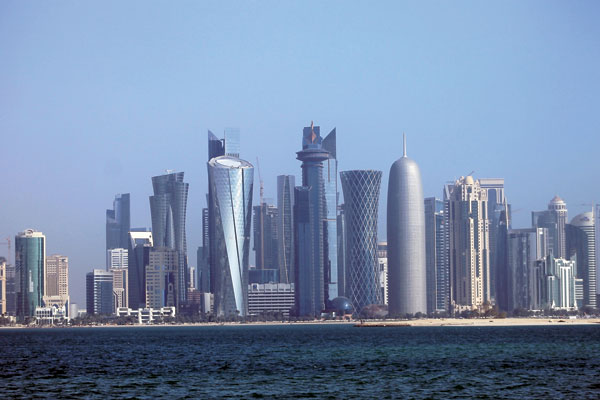
Qatar is expected to be by far the best-performing of the six Gulf Cooperation Council economies, as the world’s top natural gas exporter steps up a vast infrastructure building programme, said a Reuters poll.
Qatari GDP is projected to grow 6.7 percent this year and 6.4 percent next year. According to a Reuters poll, the outlook for most of the rich Gulf Arab economies has dimmed for this year and next as oil prices have remained relatively low, according to a Reuters poll published yesterday that showed economists cutting their forecasts.
Heavy state spending and strong private consumption are cushioning the impact of a plunge in oil export revenues. Nevertheless, some construction and economic development projects are being suspended, cooling economic growth.
Saudi Arabia’s gross domestic product is now projected to expand 2.6 percent in 2015, according to the median forecast in the poll of 18 analysts, instead of the 3.2 percent foreseen by the previous poll in January. Last year, GDP grew 3.6 percent.
In 2016, Saudi GDP is expected to grow 3.0 percent instead of the previous forecast of 3.2 percent.
SHOW_GAD
A rebound in the past few weeks has taken Brent crude oil to four-month highs around $65 per barrel — still far below last June’s level of $115, but significantly above late March prices of about $55. This improvement may not yet be fully reflected in economic forecasts. But Monica Malik, chief economist at Abu Dhabi Commercial Bank, said growth forecasts for the region might still be lowered again later this year as cheap oil slowed more development projects. “If there is no greater recovery of the oil price, there may be more downside risk in the medium term,” she said.
Although the Gulf economies are managing to continue growing in an era of cheap oil, it is at a heavy cost to their state finances. Five of the six GCC states are projected to record budget deficits this year and next.
The forecast for Saudi Arabia’s fiscal deficit this year has been raised to a massive 14.8 percent of GDP from 11.1 percent predicted in the last poll, while next year’s deficit is expected to be 10.6 percent of GDP. The UAE is forecast to run a deficit of 4.1 percent this year and Kuwait of 5.0 percent. Only Qatar is seen staying in the black, with a surplus of 1.8 percent.
Saudi Arabia has already started running down its financial reserves stored abroad to cover its budget deficit. Its reserves are so huge that it could continue to do this for years; the UAE and Kuwait are in similarly fortunate positions. But the financial reserves of Oman, projected to run a fiscal deficit of 11.7 percent of GDP this year, and Bahrain, with a forecast deficit of 12.0 percent, are much smaller. They may be forced into painful spending cuts in coming years if oil prices stay below $70 a barrel


